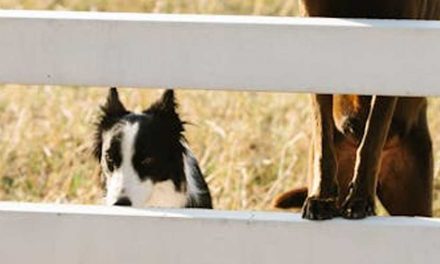Dogs are highly social animals with complex behaviors that often reflect their evolutionary history as pack animals.
One of the intriguing aspects of dog behavior is the concept of natural dominance.
This characteristic can manifest in various ways, influencing a dog’s interactions with other dogs and humans.
Understanding natural dominance is essential for dog owners and trainers to foster positive behavior and a harmonious environment.
What is Natural Dominance?
Natural dominance refers to the inherent traits some dogs exhibit that allow them to assert a leadership role within their social structure.
This phenomenon is often seen in breeds or individual dogs that display confidence, assertiveness, and a tendency to take charge in social interactions.
However, it’s important to note that dominance in dogs should not be confused with aggression; dominance is about social hierarchy rather than hostile behavior.
Signs of Natural Dominance
Dogs displaying natural dominance may exhibit specific behaviors, including:
1. Confident Body Language:
Dominant dogs often stand tall, maintain eye contact, and move with purpose.
Their posture can convey an air of confidence.
2. Resource Guarding:
These dogs may be more protective of toys, food, and space, displaying behaviors like growling or positioning themselves between the resource and others.
3. Control of Social Play:
In interactions with other dogs, a dominant dog may take charge of play, setting the rules and determining when and how to engage.
4. Preference for Higher Ground:
Many dominant dogs prefer to be at a higher vantage point, such as couches or beds, which can symbolize their leadership role within the household.
5. Attention-seeking Behavior:
They may demand attention and affection from their owners or even try to control interactions, such as nudging for petting or sitting in laps.
Factors Influencing Dominance
Natural dominance can be influenced by several factors:
Breed Traits:
Some breeds are more predisposed to display dominant behaviors due to their history and purpose.
Breeds like the Rottweiler, German Shepherd, and Doberman Pinscher often exhibit leadership traits due to their history as working or guarding dogs.
Socialization:
The experiences a dog has during its formative months can shape its behavior.
Proper socialization can help mitigate overly dominant tendencies.
Training and Leadership:
A dog’s upbringing plays a significant role.
Consistent training and firm yet positive leadership from humans can help channel natural dominance into acceptable behaviors.
Individual Personality:
Just like humans, each dog is unique. Some dogs may be more assertive due to their distinct personality, regardless of their breed.
Managing Dominance in Dogs
For dog owners, managing a naturally dominant dog involves understanding and setting boundaries.
Here are some strategies:
1. Consistency in Training:
Use clear commands and consistent rules to help the dog understand what behaviors are acceptable.
This clarity helps establish and reinforce the owner’s leadership.
2. Positive Reinforcement:
Reward desirable behaviors with treats, praise, or play.
Positive reinforcement encourages a dog to repeat good behavior and strengthens the bond between dog and owner.
3. Supervised Socialization:
Introduce the dog to various environments, dogs, and people.
Supervision allows for positive interactions and helps the dog learn appropriate behavior in different situations.
4. Engaging Activities:
Providing mental and physical stimulation through training, puzzle toys, and play can help channel a dog’s energy and drive into constructive outlets.
5. Seeking Professional Help:
If a dog’s dominant behavior leads to aggression or severe issues, consulting with a professional dog trainer or behaviorist is advisable to develop a tailored plan.
Conclusion
Understanding natural dominance in dogs is vital for fostering positive relationships between dogs and their owners.
By recognizing the signs of dominance, considering the factors influencing behavior, and employing effective management strategies, owners can help their dogs thrive in a balanced environment.
Ultimately, a well-trained and socialized dog, regardless of its natural tendencies, can be a wonderful companion and member of the family.









